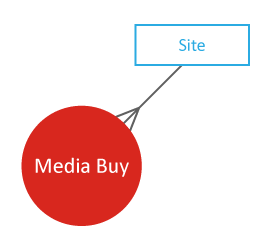Get to Know the Marketing Cloud Intelligence Data Model
Learning Objectives
After completing this unit, you’ll be able to:
- Discuss what distinguishes different data types from one another.
- Describe what the Marketing Cloud Intelligence data model is based on.
- Explain what data streams are.
- Examine the structure of the ads data stream type.
In this unit, we walk you through how the Marketing Cloud Intelligence data model is structured to maintain your data integrity.
Marketing Cloud Intelligence pulls data from a variety of sources with different data types. Each one of these different data types has its own unique combination of dimensions and measurements. The dimensions themselves are made up of entities that have a certain relationship, or hierarchy, between them. When extracting this data from its source and ingesting it into Marketing Cloud Intelligence, it’s important to allow for these dimensions and measurements to be stored in correlating Marketing Cloud Intelligence fields. It is also important to maintain the relationship which existed between the entities in the source, otherwise the data may be aggregated incorrectly in Marketing Cloud Intelligence’s own database.
For this reason, Marketing Cloud Intelligence creates correlating dimensions and measurements for each of the different data types and emulates the unique relationship which exists between the dimensions’ entities in the source. This means that the corresponding Marketing Cloud Intelligence entities within Marketing Cloud Intelligence’s own database follow the same relationship. Modeling the Marketing Cloud Intelligence database by these dimensions, measurements, and entity relationships for the various data types is collectively known as the Marketing Cloud Intelligence data model.
Within each data type, the Marketing Cloud Intelligence data model considers one of the entities to be the main entity. The main entity is the entity with which everything else is essentially associated. It’s usually designated by its significance from a marketing perspective or by virtue of its connecting position to other entities in the hierarchy.
Understand Data Streams
In order to upload your data into the system, Marketing Cloud Intelligence uses instruments or tools known as data streams. Data streams facilitate the automatic uploading of data from various sources, as well as the mapping of the source fields to the relevant Marketing Cloud Intelligence fields. For each one of the different data types, there’s a dedicated data stream type, sometimes also referred to as a bucket, which is suited for that particular data.
Use Case: The Ads Data Stream Type
For further clarity and context, let’s apply what you’ve learned so far to a specific data type. Since Marketing Cloud Intelligence is primarily used for uploading marketing data, let’s focus on our most commonly used data stream type, dedicated to uploading delivery performance type data. This data stream type is known as the ads data stream type.
As mentioned above, each data type is characterized by its unique combination of dimensions and measurements. The lists below show the entities and some of the more prominent measurements that make up ads or delivery performance type data.
Entity names:
- Campaign
- Site
- Media Buy
- Creative
Measurement names:
- Impressions
- Clicks
- Media Cost
- Social Measurements (various social measurements)
- Video Measurements (various video measurements)
- Rich Media Measurements (various rich media measurements)
As is always the case with entities, there’s a relationship or hierarchy between them. This relationship in the Marketing Cloud Intelligence data model can be one of two possibilities: one-to-many or many-to-many. Let’s try to understand what this relationship is between the entities within the ads data stream type by considering how these entities interact with each other in the real world. We explain these relationships using diagrams that follow the legend below.

Let’s start with the relationship between the advertising space on a site (called a placement or media buy) and the site itself. Since each site has a number of available media buy spaces, yet each media buy is site-specific, this indicates a one-to-many relationship between a site and media buy.

Likewise, while each campaign can be associated with multiple media buys, each media buy is campaign specific. This indicates that the relationship between campaign and media buy is also one-to-many.

Since the same media buy can be populated with multiple ads or creatives, while also used in multiple media buys, the relationship between media buy and creative is many-to-many.

Here’s what those relationships look like altogether. Note that the media buy is the main entity of the ads data stream type.

This is the same relationship that exists between these fields in the Marketing Cloud Intelligence database, thanks to the Marketing Cloud Intelligence data model. So long as the source fields are mapped to the correct fields in Marketing Cloud Intelligence, their original relationship (as it exists in the source) is maintained and no data is distorted or lost.
Knowledge Check
Let’s see if you can use the above entity relationship diagrams to identify the relationships between the entities in the ads data stream type. This activity isn’t scored—it’s just an easy way to quiz yourself. Drag each set of related entities from the left column, into the correct relationship description on the right. When you finish, click Submit to check your work. If you’d like to start over, click Reset.
When using our API connectors, these mappings are automatically implemented behind the scenes. Marketing Cloud Intelligence also offers a customizable data stream configuration called TotalConnect. With TotalConnect you can manually configure a data stream yourself to map the source fields to the corresponding Marketing Cloud Intelligence fields. To ensure correct mapping, make sure that you’re using the correct data stream type, and be mindful of both the relationship between the entities in your source data and the relationship between the Marketing Cloud Intelligence entities they’re mapped to.
Now that you understand what data streams are and how they function with Marketing Cloud Intelligence, let’s get familiar with the most popular data stream types.
